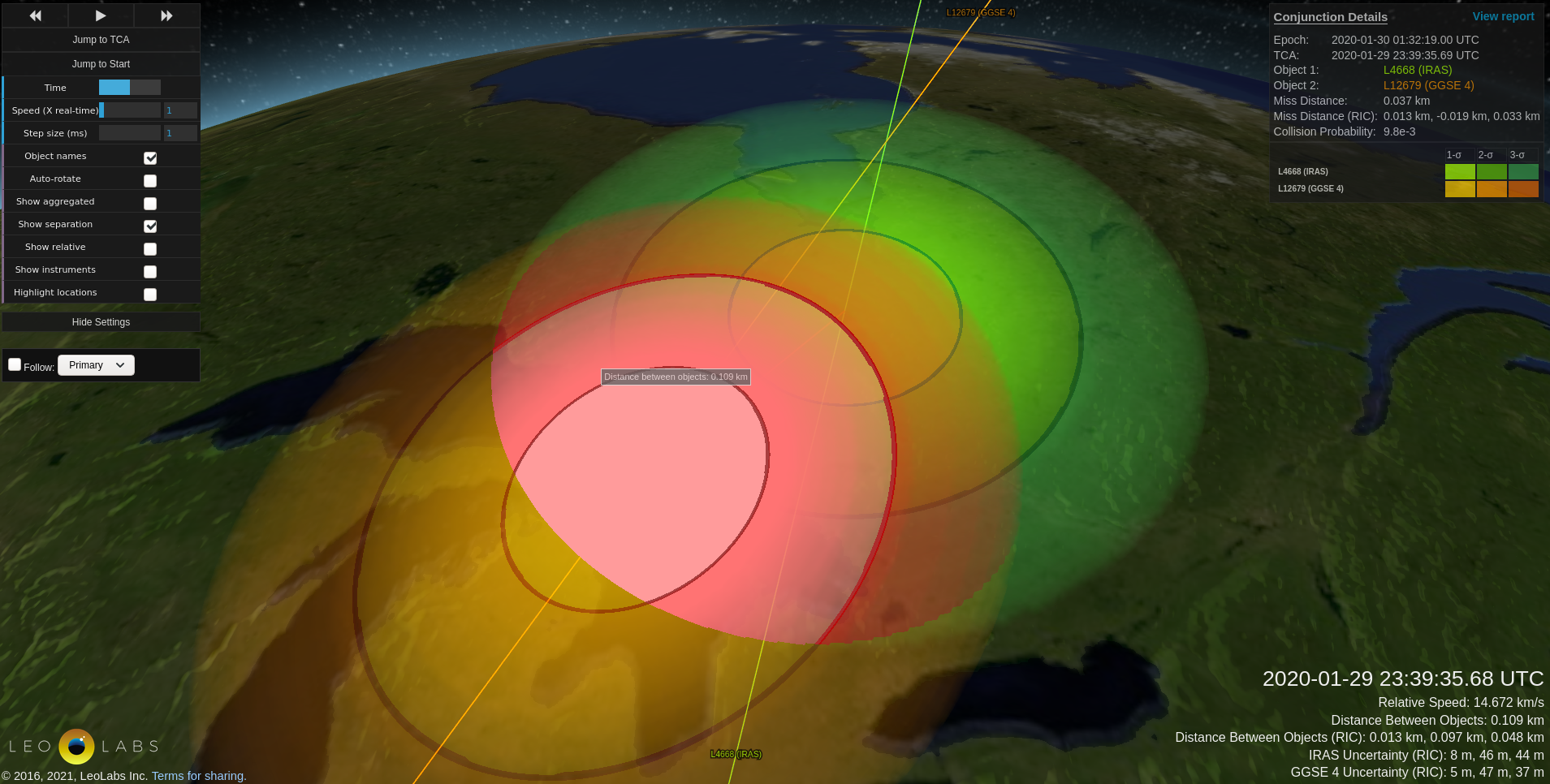Conjunction Data Message
Learning more about CDMs
One of the reasons for satellite monitoring is to avoid collisions. Most modern satellites are capable of maneuvering out of harm’s way, at least until they run out of fuel. All they need is information about possible threats, which is provided by the Space Surveillance Network (SSN), other government-level players, and LeoLabs.
A conjunction event is the possibility of two objects in space colliding. In other words, a close encounter. Conjunction Data Message (CDM) is the data format used to inform satellite operators about this possibility.
A CDM includes information about both objects in question: unique id, size, type, and more. CDMs also include information about the conjunction event itself: probability of collision, miss distance, Time of Closest Approach (TCA), etc.
After a conjunction event is identified, more accurate CDMs are issued until the TCA. In the interval between two to one days prior to TCA satellite operators must decide whether to perform a collision avoidance maneuver (source).
SpaceTrack provides an API that lets you query CDMs. This query yields the following data:
CDM 193725858 describes a conjunction event between two large objects,
INTELSAT 2-F2 and GORIZONT 29, with TCA 2021-12-29 09:21:53.748000 (UTC).
It seems the probability of collision PC is unknown and the miss distance
MIN_RNG is 1737 miles (yes, believe it or not, the format uses miles for distance).
Note that I’m still trying to confirm my understanding of PC and MIN_RNG.
Despite the broken link in SpaceTrack, I found and skimmed
CDM Recommended Standard 508.0-B-1 (PDF download),
but fields PC and MIN_RNG don’t match what I saw on that spec.
Here’s a public LeoLabs CDM report
for a conjunction event between IRAS and GGSE 4 with TCA 2020-01-29 23:39:35.696000 UTC.
The report is impressive, specially the mini-map that lets you follow
both object’s orbits close to TCA and link to amazing visualizations
of the event:

Unfortunately, most other details linked from the report (including the actual CDMs generated) require a LeoLabs account, which I don’t have (yet!).